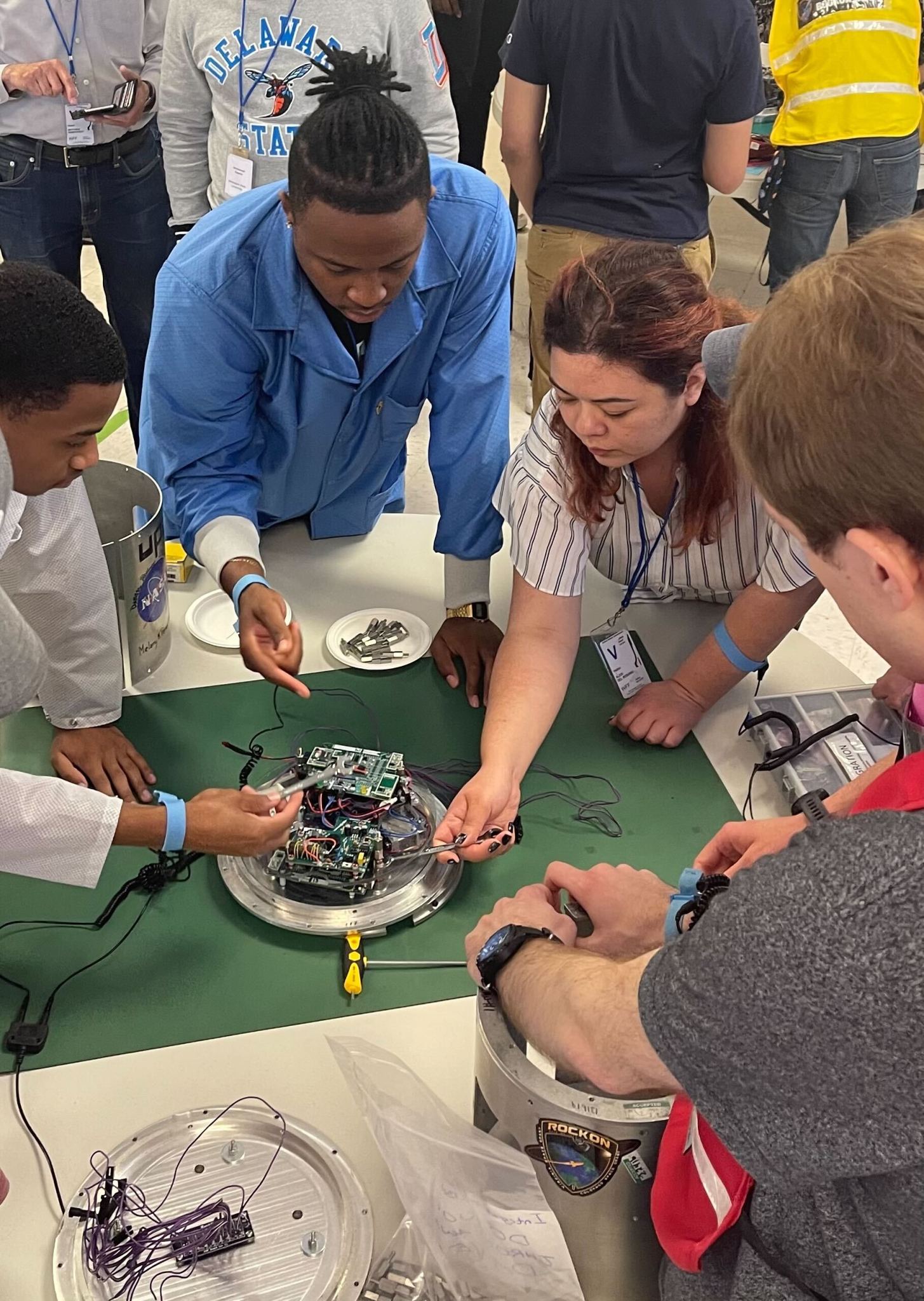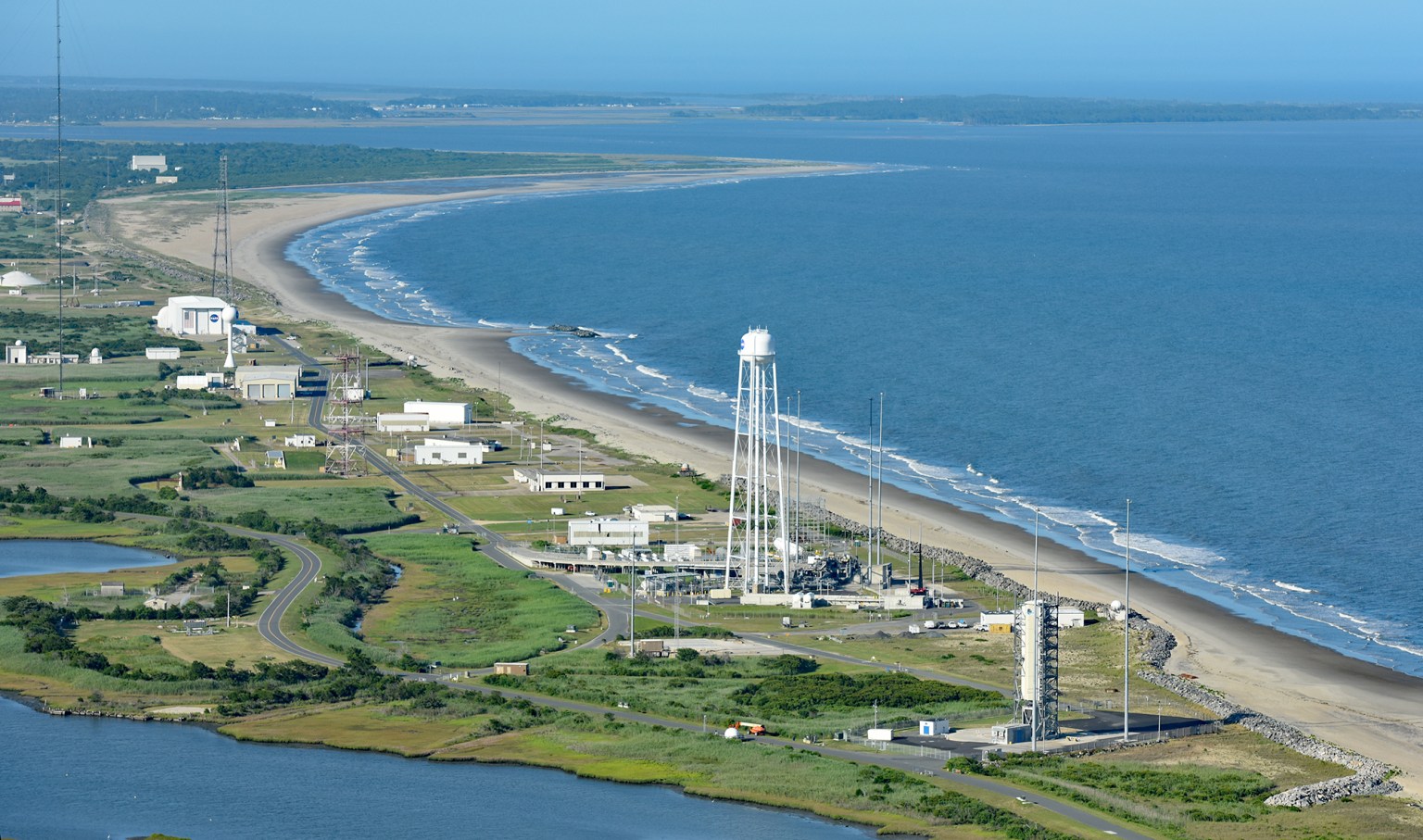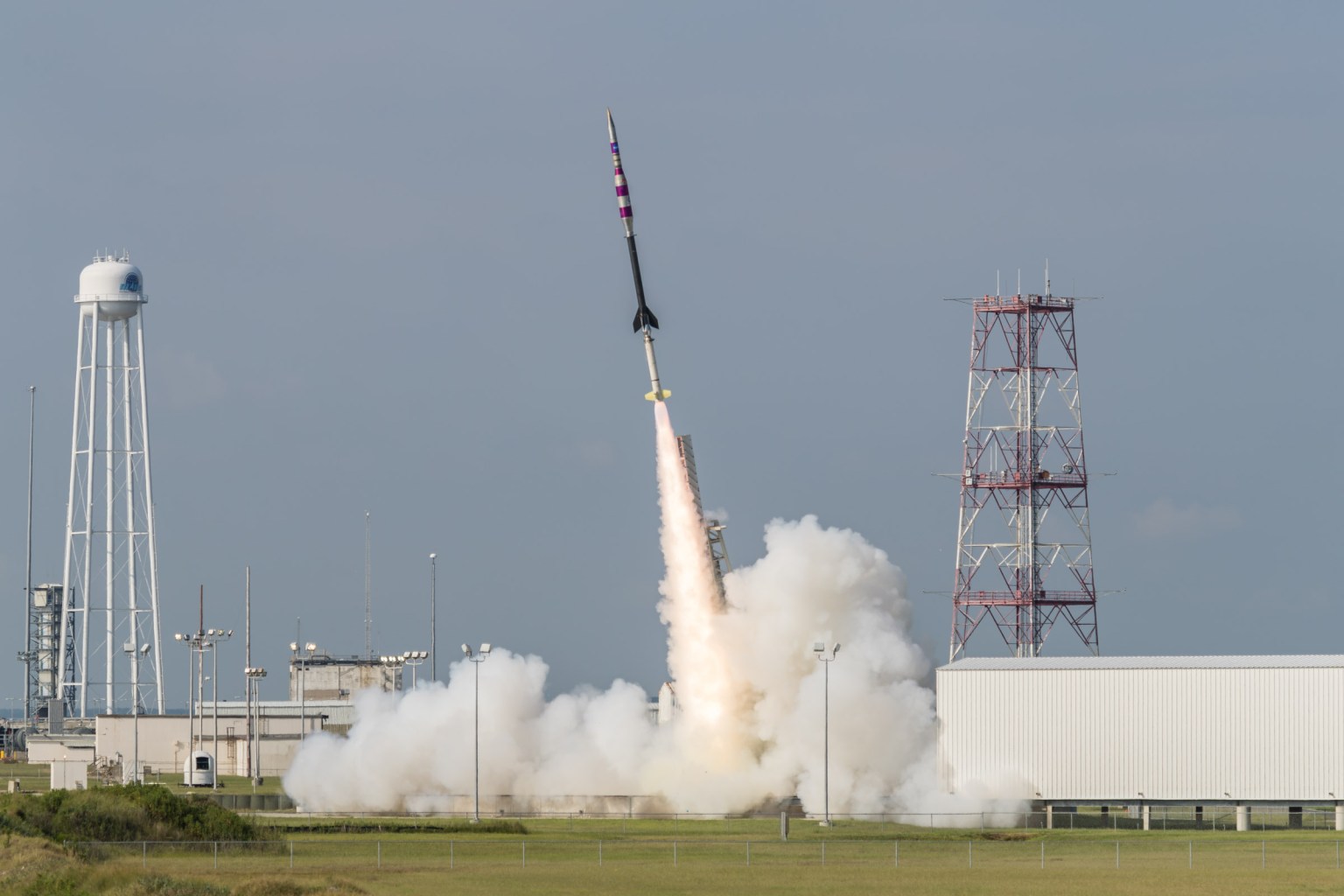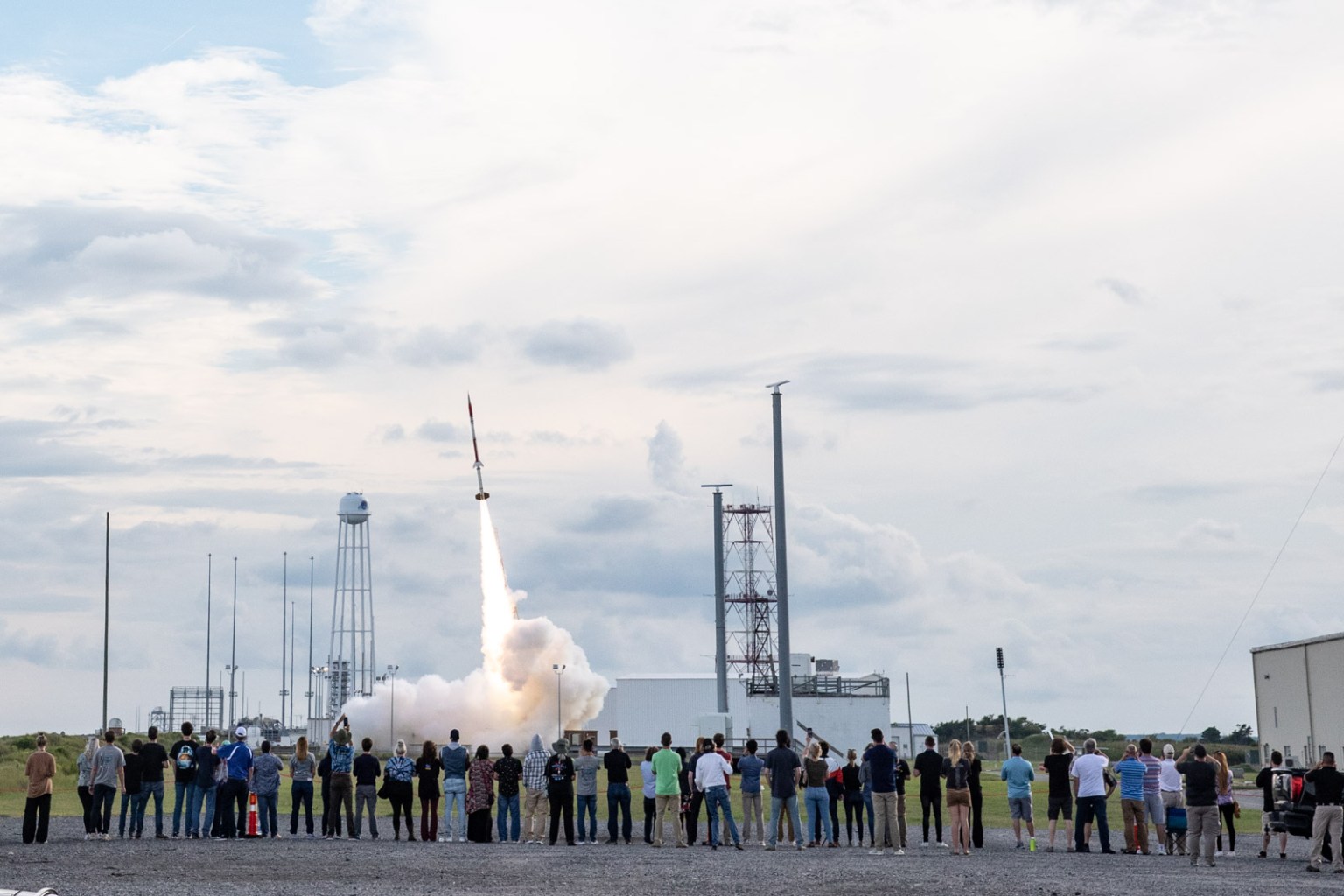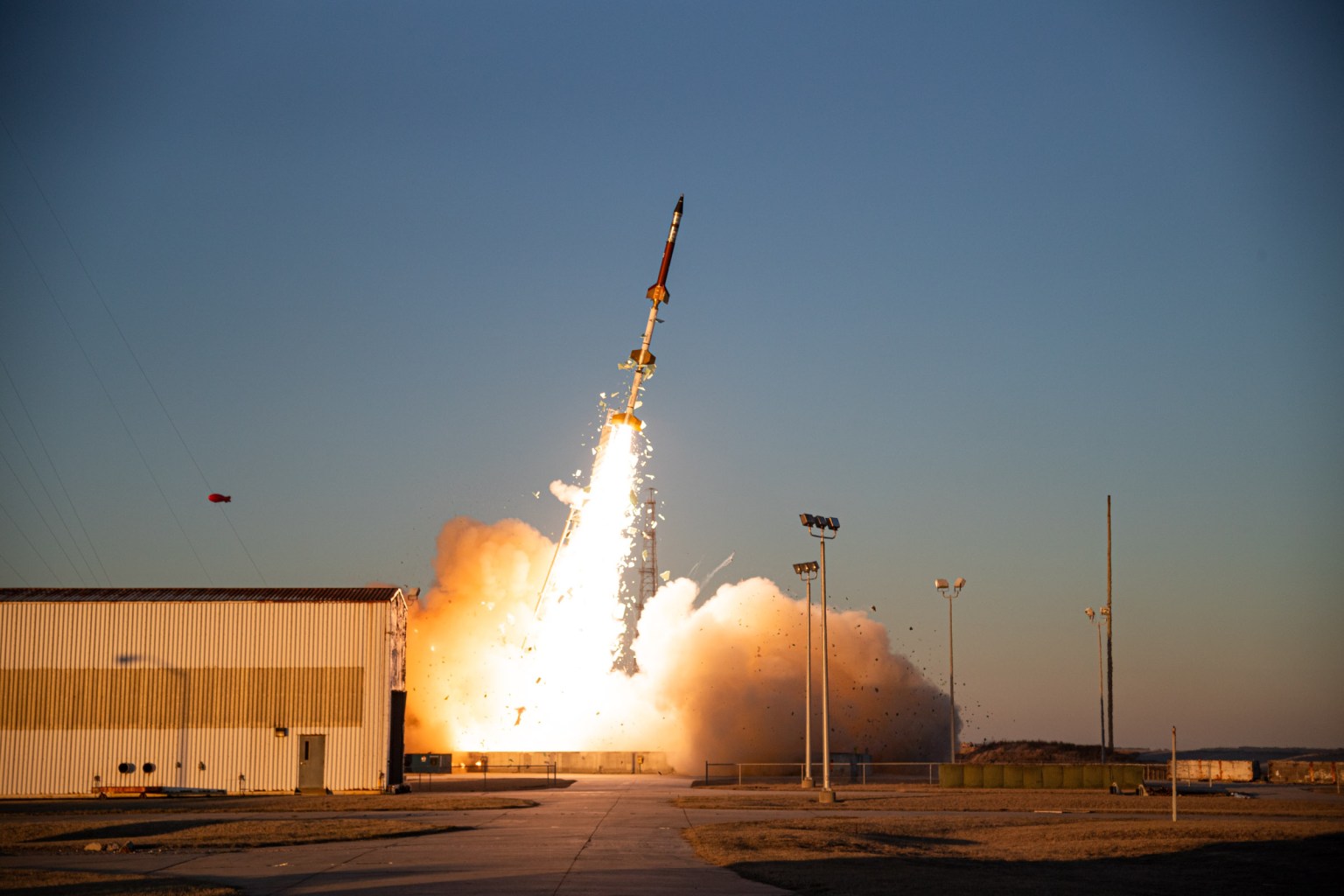NASA's Wallops Flight Facility is scheduled to launch two sounding rockets carrying student developed experiments for RockSat-X and RockOn/RockSat-C missions on Aug. 15.
Update Aug. 16, 2023: NASA mission controllers have postponed the launch of the RockOn/RockSat-C student sounding rocket mission following an anomaly that occurred with the RockSat-X sounding rocket launch that lifted off Wednesday, Aug. 16, at 6:21 a.m. EDT from Wallops. NASA range, safety, and sounding rocket program experts are investigating the cause of the anomaly. NASA ensures safety during all launch operations by making sure the range hazard area is cleared before launch. More information will be released as it becomes available. No new launch date for the RockOn/RockSat-C launch has been set.
Update Aug. 14, 2023: The RockSat-X and RockOn/RockSat-C launches have been rescheduled to Wednesday, Aug. 16, due to unfavorable weather conditions and poor sea state for recovery. The window remains 6-10 a.m. EDT. The Wallops Visitor Center will open its gates at 5 a.m. on Wednesday for launch viewing.
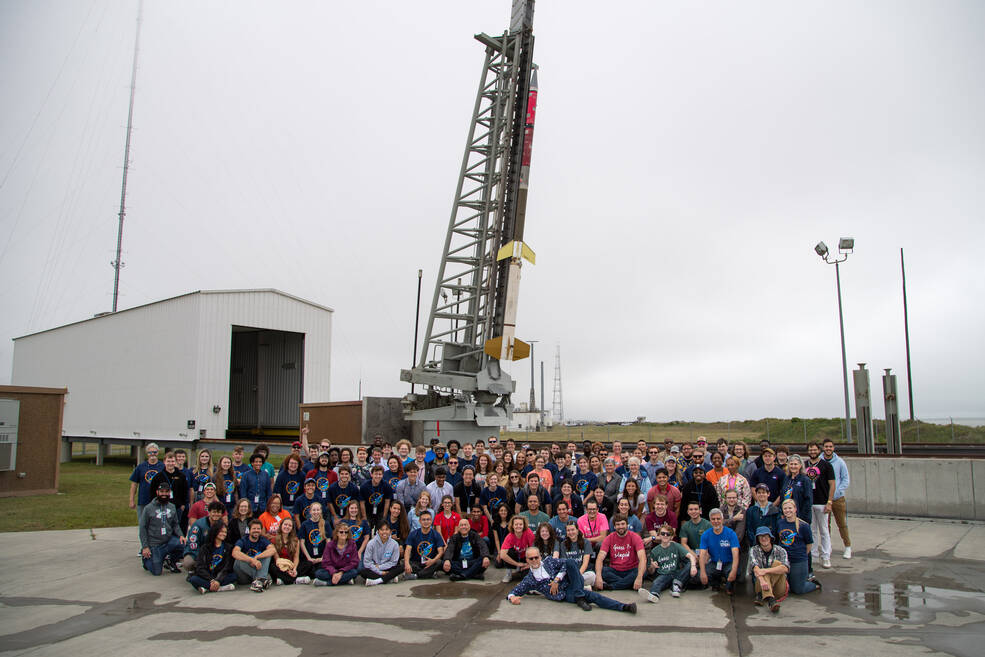
NASA’s Wallops Flight Facility is scheduled to launch two sounding rockets carrying student developed experiments for RockSat-X and RockOn/RockSat-C missions on Aug. 15.
The launch window for the missions is 6-10 a.m. EDT. The Wallops Visitor Center’s launch viewing area will open at 5 a.m. for launch viewing. Coverage of the mission will begin 15 minutes before the first launch on the Wallops YouTube channel. Launch updates also are available via the Wallops Facebook and Twitter sites.
The Terrier-Improved Orion and Terrier-Improved Malemute rockets will launch 5 minutes apart and are expected to reach an altitude of about 70 miles (113 kilometers) before descending by parachute into the Atlantic Ocean to be recovered. Backup launch days are Aug. 16 through 18. The launches may be visible in the Chesapeake Bay region.
The rockets will be carrying experiments developed by more than 30 university and community college teams as part of NASA’s RockOn Workshop and RockSat programs. Fifty percent of the RockOn teams are from minority serving institutions.
“The RockOn/RockSat programs provide unique hands-on experiences for students in the development of scientific experiments and working in teams, so these students are ready to enter STEM careers,” said Dr. Joyce Winterton, Wallops senior advisor for education and leadership development.
In addition to the higher education experiments, 80 experiments will take flight as part of the Cubes in Space program, which partners with Wallops to provide a platform for students aged 11 to 18 to develop and conduct research and science that connects to real-world Earth or space-based problems or needs. The RockOn/RockSat-C mission was previously scheduled to launch in June 2023, but was delayed due to weather.
RockSat-X 2023 flight projects:
University of Puerto Rico:
The team plans to collect micrometeorite samples from the upper atmosphere and to create an in-depth profile of the atmosphere to deliver environmental context for biosignature detection.
Northwest Nazarene University
This team is testing two robotic arms that could be used to assist astronauts conducting maintenance and repairs during spacewalks.
Red Rocks and Arapahoe Community Colleges of Colorado
These two teams will deploy an extendable arm system equipped with a 360-degree camera to capture video of the rocket, payloads and a view of Earth. A virtual reality video from one of their previous flights can be viewed here.
West Virginia Space Collaboration
West Virginia State University (WVSU):
Several experiments will measure acceleration, rotation, velocity, magnetic field, temperature, pressure and radiation levels. Lab grown Mycelium blocks, will be tested for structural integrity and durability during space flight.
West Virginia Wesleyan College (WVWC):
The experiment will control the spin of a gear motor at the same frequency but in the opposite direction of the rocket’s rotation.
Blue Ridge Community and Technical College (BTCTC):
The team will create and design an Autonomous Navigational Assistant.
West Virginia University Institute of Technology (WVUIT):
Knowing at any moment position, acceleration, and rotation of the rocket
Virginia Tech
This payload will eject FemtoSats away from the payload and investigate communication methods between the FemtoSats, the payload, and the ground. They also plan to improve upon their star-tracking instrument designed by the Virginia Tech 2022 RockSAT-X team.
University of Kentucky
The team is testing a method of ejecting a capsule that will also collect and transmit data during the flight. The capsule ejection method is planned to be used for a future International Space Station mission.
Information on RockOn and RockSat programs is available at:
https://www.nasa.gov/sounding-rockets/rocksat-programs/
Amy Barra
NASA’s Wallops Flight Facility, Wallops Island, VA
amy.l.barra@nasa.gov
























